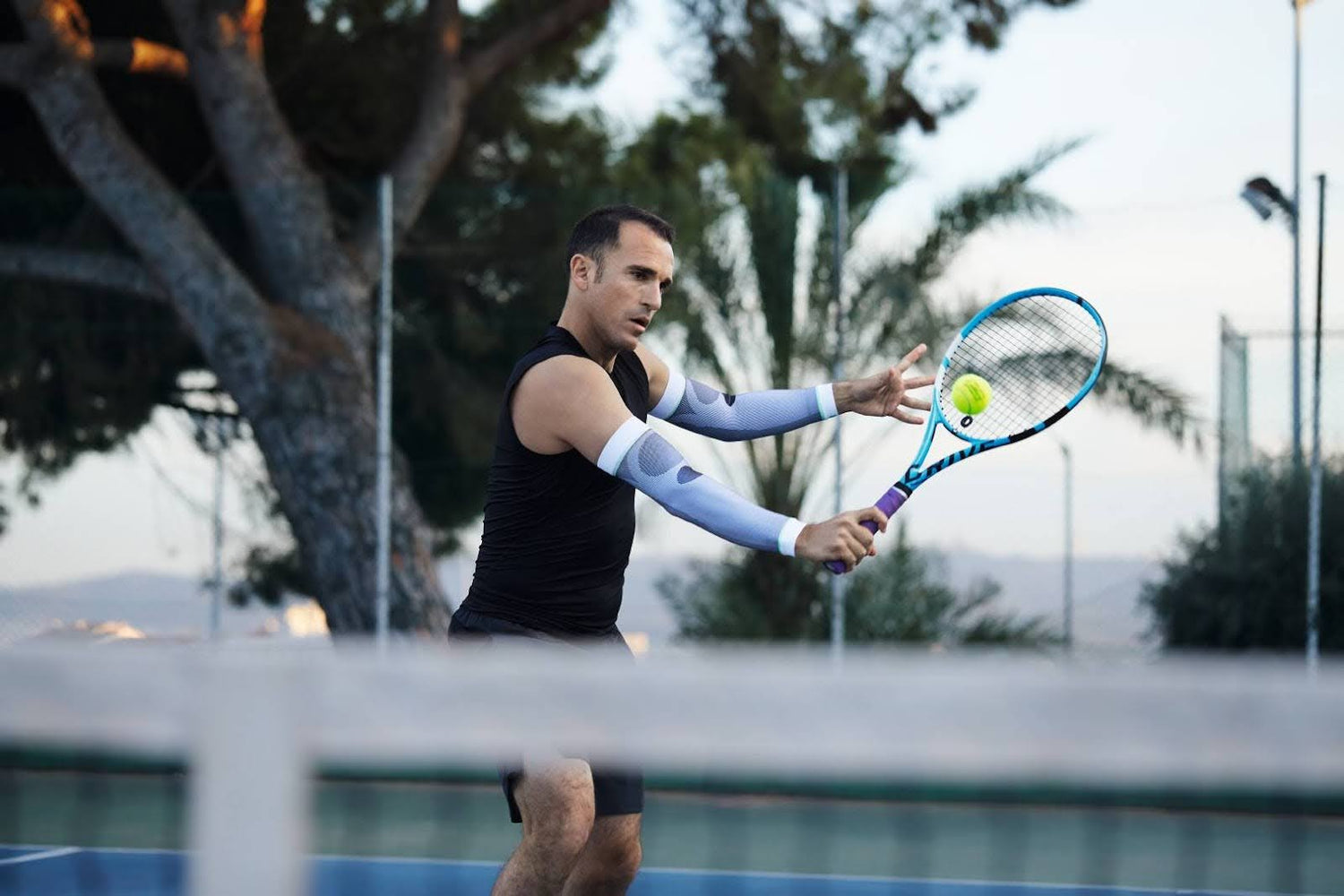Were you inspired to pick up tennis or step up your game after watching the Australian Open? While getting near the pro level of play will take time, the right workout routine, gear, and plenty of proper practice will get you on your way. So, without further ado, here’s our guide to improving your tennis skills.
1. Stick to what works
When just starting out, it’s a good idea to experiment with different shots and patterns on the court. Find the best serves, backhand and forehand shots and stick to them. Experimenting with flourishes during a vital match does make it interesting to watch, but if your new technique doesn’t work, you’ll lose a point.
Remember: the best tennis players have a very limited set of swings. Once you find your best pattern, perfect it, practice it and stick to it.
2. Aim comes first
It’s best not to go hitting the ball at 100% velocity, especially if you’re a beginner. It can lead to a lot of wild shots and potentially an injury. You need to work on your aim first to build good muscle memory. Practice serving and hitting the ball at a slower pace, ensuring that it lands within the lines. Keep an eye on how your shoulder, arm, wrist, legs, and back move with every serve and hit to see what needs to be adjusted for better precision.
3. Train with tennis drills
The more you practice the motions of tennis, the better you’ll get. Hence, you should run drills when you can. Here are some great drills to start with.
- Dribble the tennis ball with your racket as quickly and as long as possible. Slightly change the angles of your hits to work on your reflexes and get used to the racket.
- Practice volleys with a friend, keeping the ball in the air as long as possible.
- Backpedalling overheads involve you standing at the net and your opponent lobbing the ball at your court with an overhead shot. Backpedal as fast as you can to get to the ball in time.
- Hit groundstroke shots fed to you by a machine or a friend. Aim never to let the ball hit the court twice.
4. Strength train your entire body
Just as in cricket and volleyball, tennis strength doesn’t mainly come from the arms. For the strongest hits and best movement mechanics, it’s essential to strengthen your back, core, and legs.
- Squat and lunge variations are great for building muscle in the legs and glutes. Try out jump squats, kettlebell squats, sumo squats, and front, side, and isometric (hold) lunges.
- Dead bugs and planks are a good place to start for the core.
- For the upper back and arms, try bend-over rows with a barbell, resisted rows with a resistance band, and the standing military press.
5. Wear tennis supports

SPORTS WRIST SUPPORT
SPORTS KNEE SUPPORT
To enhance your tennis game further, wear sports supports. These will help stabilise your joints, reduce muscle fatigue, improve movement mechanics, and reduce the risk of injury.
For example, the Sports Knee and Sports Elbow supports will boost circulation and activate the muscles. With faster and more efficient muscle activation and more oxygen and nutrients in the muscle tissues, you can play better and longer.
Sports Wrist Straps, meanwhile, stabilise the wrist joint to protect its more delicate muscles and tendons during powerful volleys, serves, and shots.
When playing and practising, see which areas could use a little extra help and strap or sleeve them up.
6. Stretch!
Tennis is a fine motor sport where a slight adjustment in positioning or a bit of extra twist in the wrist or flexibility in the shoulder can significantly improve the direction and power of your serves and shots.
So, take 10-15 minutes to warm up and stretch before training or playing. Here are some good stretches to start with:
Tennis Elbow Stretch
- Stand up with your spine neutral
- Extend your right arm in front of you
- Turn your hand so your palm is facing away from you, and your fingers point to the sky
- With your other hand, gently pull your fingers back toward you as far as you comfortably can.
- Hold the position for 20 seconds, then release.
- Repeat for the other side.
Anterior shoulder stretch
- Stand up straight with your arms at your sides
- Bend your elbows slightly and clasp your hands behind your lower back.
- Gently squeeze your shoulder blades together and roll your shoulders back.
- Slowly straighten and lift your arms behind you as far as you comfortably can.
- Hold the position for a few seconds, then release
- Repeat 2-3 times.
Calf stretch
- Stand facing a wall
- Stretch out your arms and place your palms flat on the wall.
- Step your right foot forward slightly and your left leg back. Ensure the left leg is straight, and your heel is planted firmly on the ground.
- Slowly bend your arms and right knee until you feel a stretch in your calf.
- Hold the position for 20 seconds, then release.
- Repeat for the other side
Lunge and twist
- Stand on an exercise mat or the slightly squishy turf of a tennis court
- Go down into a lunge so your left knee hits the ground
- Slowly twist your torso to the right and press your left elbow to the inside of your left knee.
- Extend your right arm out and slightly behind you
- You should feel a slight stretch on the inside of your thigh and through your lower back
- Hold the position for 20 seconds, then release
- Repeat for the other side

7. Sneak a snack
Pack some power bars, fruits, and a sports drink if you're in for a long match. While beginners don’t usually play the 4+ hours pros do, just an hour on the court can burn a lot of energy and leave you fatigued in the final set, leading to slower runs and weaker hits. Eat during changeovers and stay hydrated to maintain muscle strength.
8. Don’t hesitate
At the pro level, tennis balls get whacked at 180+ km p/h! A split second of hesitation can cost you a point or even the match. While beginners likely won’t be hitting the ball at those velocities, it’s a good idea to build a habit of not hesitating.
Even if you think you have no chance of making it to the ball in time, run for it anyway. Who knows, you might get a lucky backhand shot.
If you’re feeling flighty when you’re about to hit the ball, don’t think about it. Just hit it. In practice and play, it’s better to hit it badly than not at all.
To sum up
Tennis is a high-precision, high-endurance sport. To get better, you’ll need to practice the right moves, warm up before your game, eat right, build muscle strength and endurance on and off the court, and wear the right gear. While getting anywhere near the pro level will take time, these steps will push you in the right direction.
Explore more tennis supports: Tennis Support
If you require assistance selecting the right product for your needs or wearing the brace, call us on 098015660 or contact us via live chat.
Do you have private health? Most private health extras will cover Bauerfeind Products. Check to see if yours is included. Bauerfeind Private Health Insurance Inquiry.
















